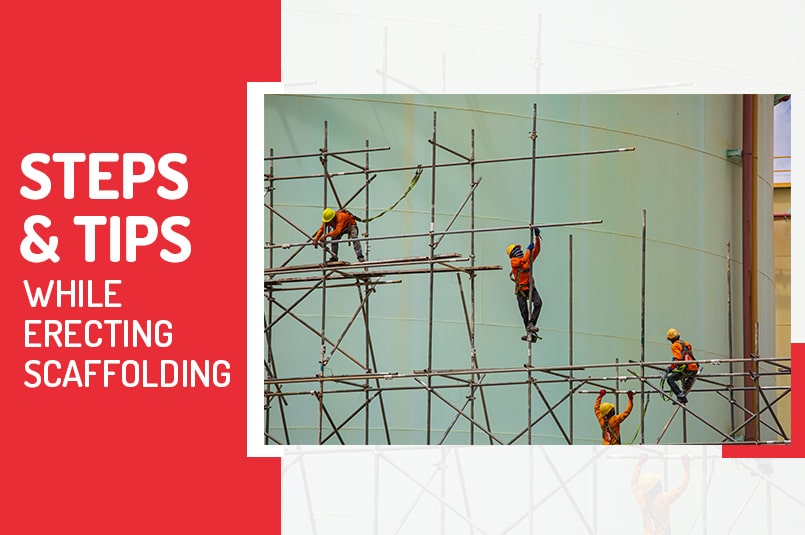
Scaffolding is a part of every construction project. It is used to access heights and areas that are otherwise hard to reach. It is also known as scaffold or staging, which is a temporary structure that supports a work crew. Scaffolds also aid in the construction, maintenance, and repair of buildings, bridges, and other structures.
There are different types of scaffolding that are used for access work.
- Tube and fitting scaffolding
- Modular or system scaffolding
- H-frame system scaffolding
- Timber scaffolding
- Bamboo scaffolding
Every scaffolding system is made from individual scaffold parts, which are to be assembled together to form a highly stable framework. Scaffolds Supply is a scaffolding parts distributor in the USA, that provides high-quality scaffolding parts to enhance the make-up of the structure. The products coming from the house of Scaffolds Supply are made from structural steel that ensures scaffold reliability.
Describe more about the scaffold parts and mention about scaffold supply.
In this article, we shall go through the steps of erecting a scaffold frame and tips to maintain a stable scaffold.
8 easy steps to erect a scaffold
Step 1: Build a strong foundation
Choose a stable foundation that will be able to bear the load of the scaffold and work crew. For this, you can either get mud sills or base plates. Secure them to the ground and make the footing stable. If the level of the ground is uneven, you may have to dig down to make the ground even. Besides leveling, you can also use adjusting screws to level the structure. You may need leg extensions along with adjusting screws if the scaffolding is to be built on a slope.
Step 2: Fix the casters
It is better to fix casters if you want your scaffold to be mobile. This will be helpful in cases where the ground is even and the work to be done needs the same scaffold at different places. After fixing the caster wheels, lock them to maintain a sturdy structure.
Step 3: Assemble the scaffolding frame
Layout the ends of the scaffolding, or if you have a pre-assembled scaffolding frame, just raise both sides of the scaffolding and fix them with the cross diagonal braces. If you are building your scaffolding, start by fixing the end scaffold parts with tubes and clamps. After completion of the end scaffold parts, raise each and attach them with cross diagonal braces. If there is any requirement for extra support, attach more braces.
Step 4: Make sure the scaffold is stable
Move your scaffold structure (if it has caster wheels attached) and make sure that the scaffold is secure and stable. In other cases where your scaffold is not mobile, shake it from one end to another and observe which joint is not fixed properly, then do the necessary fixing.
Step 5: Place the planks
Lift the planks and place them where the platform is required. Fix the platform with the hardware in place.
Step 6: Secure access to the scaffold
If scaffold ladders are used as access, use the ones designed for the particular scaffold. The scaffold can be accessed by stair-like ladders; however, these must have handrails and treads. Making the access point safe to move around and keeping the scaffold from toppling over is important.
Step 7: Attach the guardrails
To ensure safety at heights, guardrails are attached. This reduces the risk of falls. You should also consider using tie-offs and other fall protection equipment to increase safety and minimize liability.
Step 8: Inspect the scaffolding
Thoroughly examine that all the scaffolding parts and accessories are fixed in place. Inspect the scaffold system before and after work each day to ensure safety.
Safety tips while erecting scaffolding
- Inspect the work area
Evaluate the foundation and see which base would retain the sturdiness of the scaffold system.
- Check the weather
Construction work can be affected by extreme climates. Rain can make it easier to slip over, and winds can blow equipment away, which may lead to potential hazards.
- Inspect scaffolding
Check your scaffolds daily and keep a record for
- Deterioration of planks and toe boards
- Erosion of scaffold tubes
- Broken or damaged handrails
- Impaired braces and clamps
- Employees’ safety
Every scaffold user should use personal protective equipment (PPE), which includes a hard hat, non-slip boots, a safety harness, and a safety harness to prevent the risk of falling from heights.
- Other
- You should include scaffold ladder access wherever necessary.
- Do not overload scaffolds
- Cover the frame width with planks. In the case of gaps between the planks, use scaffold infill planks to ensure further safety.
- Install toe boards to avoid debris falling off the scaffolding.
Final Words
The easy steps to erect scaffolding and tips to make scaffolding safe are all you need to avoid unnecessary liabilities. It is important to follow every step and tip to ensure safety and erect a strong scaffold framework.
Scaffolds Supply is a leading scaffolding parts distributor and supplier in the USA. We provide all types of scaffolding systems with premium quality and galvanizing finish. Our products meet international safety standards and OSHA regulations, which make them best-in-class and the best fit for every construction site.
We hope that the aforementioned information was useful.











Comments are closed